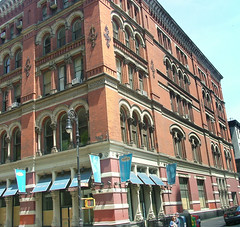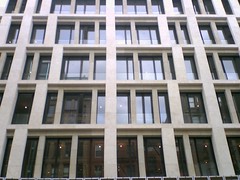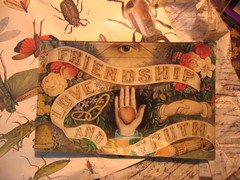South:Corner (666 Broadway): Current home to Harper's Magazine and the Center for Constitutional Rights; first offices of the media watch group FAIR. Robbins & Appleton Building1-5: A Second Empire classic from 1877. Robbins made watch cases and Appleton was a prominent publisher. The building now houses the Art Store. One of the residents upstairs has been actor Kristen Stewart. No. 5 was the site of
Albert Gallatin's home; Gallatin was Jefferson and Madison's
treasury secretary and the founder
of
NYU.
7: Bond 07, a stylish boutique. 9: Creed, a very expensive perfumerie that people rave about. Founded in 1760, the company's customers have included Audrey Hepburn, Grace Kelly and Natalie Wood. |
B
|
North:
Corner (670 Broadway): Leica Galleries, Wet Seal clothing are in former Brooks Brothers store (1873-1884, their third location); built on the site of the Samuel Ward Mansion, art patron (his private gallery here was said to be the first in the U.S.) and father of Julie Ward Howe, who composed "The Battle Hymn of the Republic." The corner lot used to be the home of David S. Jones, for whom Great Jones Street is named. 2: Paul & Joe, spendy French boutique named for designer Sophie Albou's sons. In the 1970s, jazz singer Joe Lee Wilson operated a 100-seat club called Ladies' Fort in the basement here, sparking a movement of musician-run performance spaces called "jazz lofts." 6: Bond Street, spendy sushi bar 8: The New York Theological Seminary, which later became Union Theological Seminary, opened here in 1836. |



